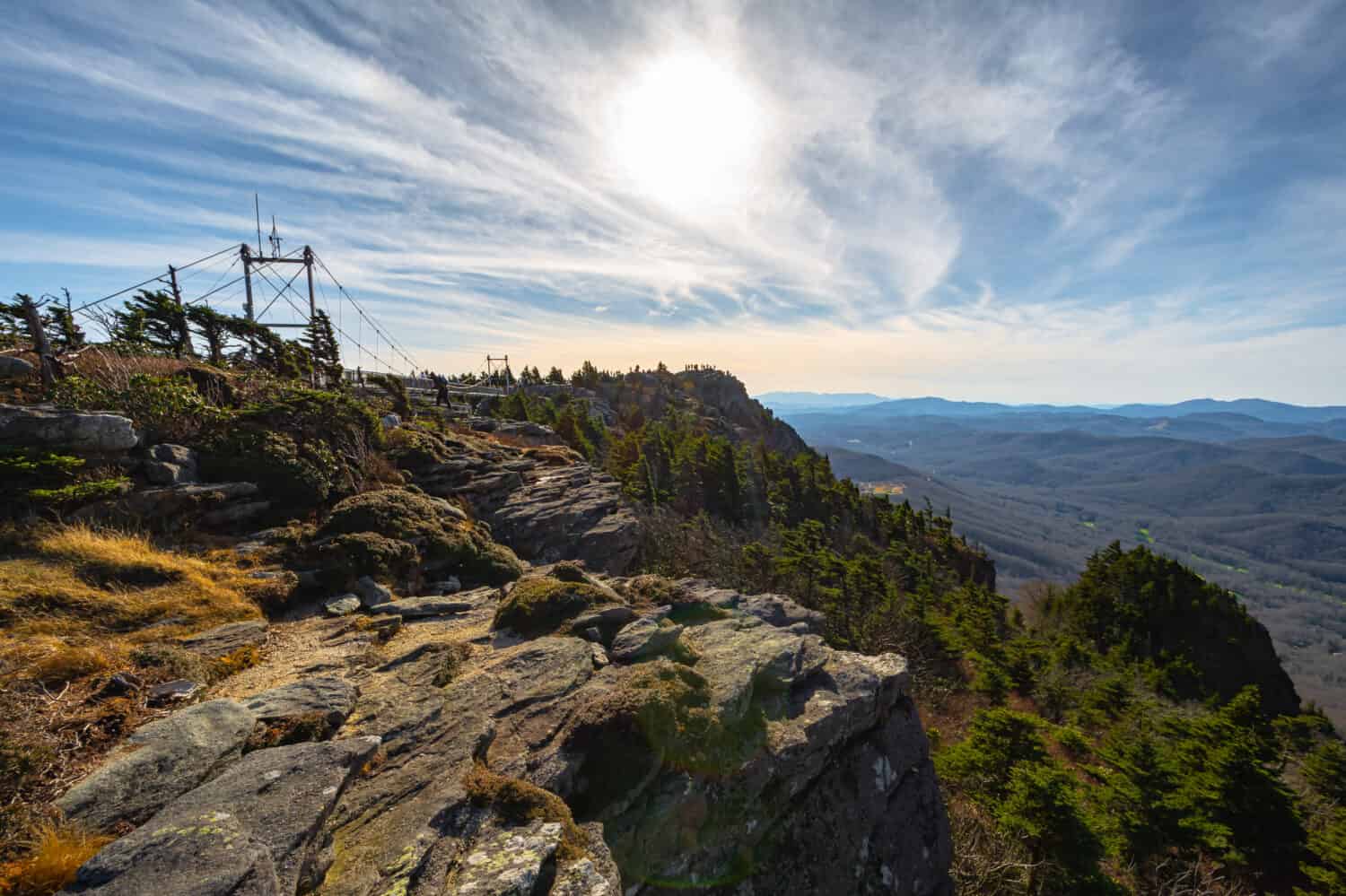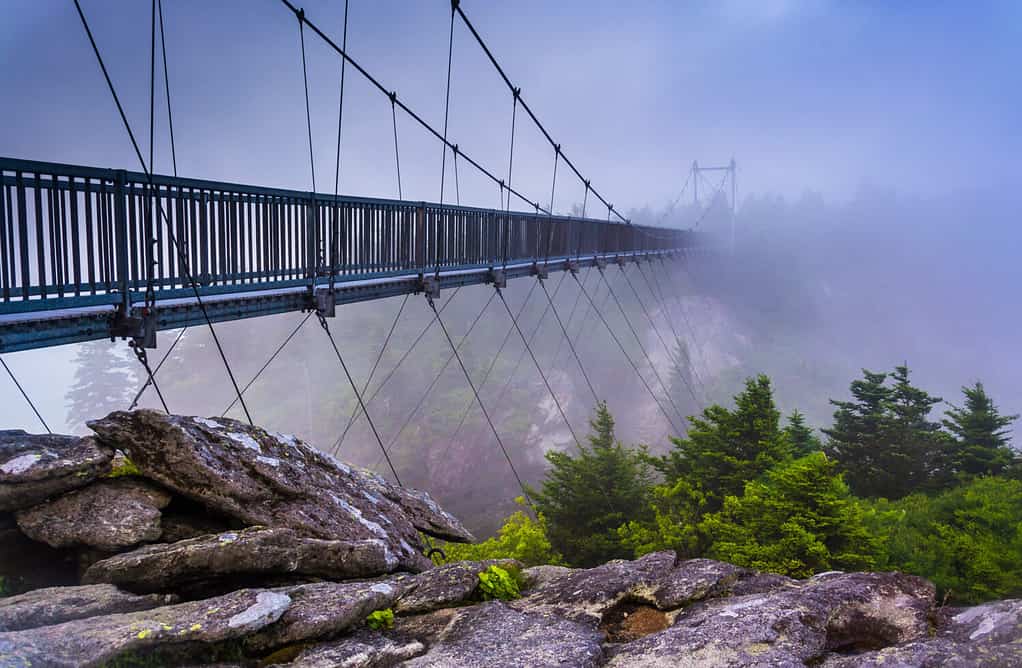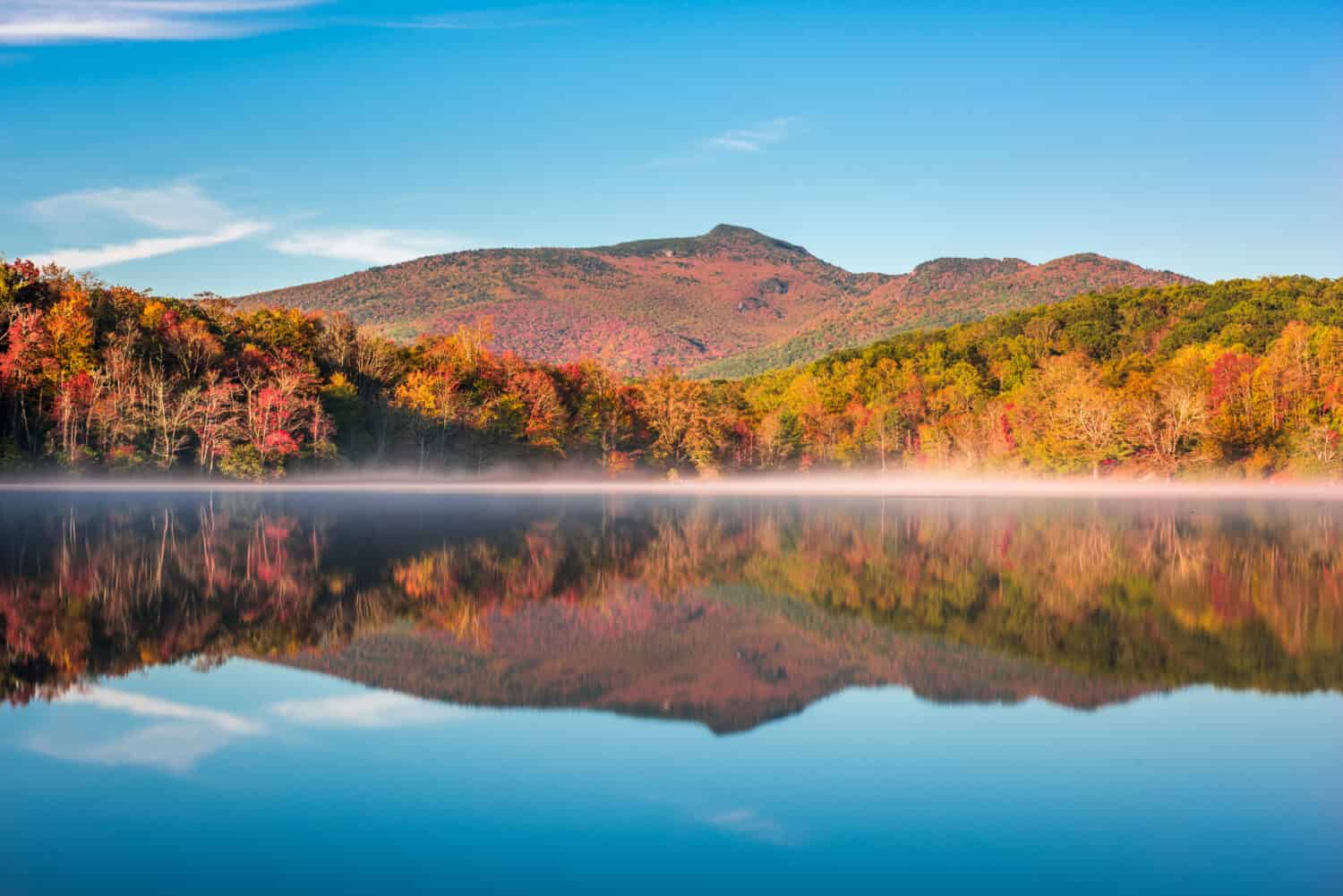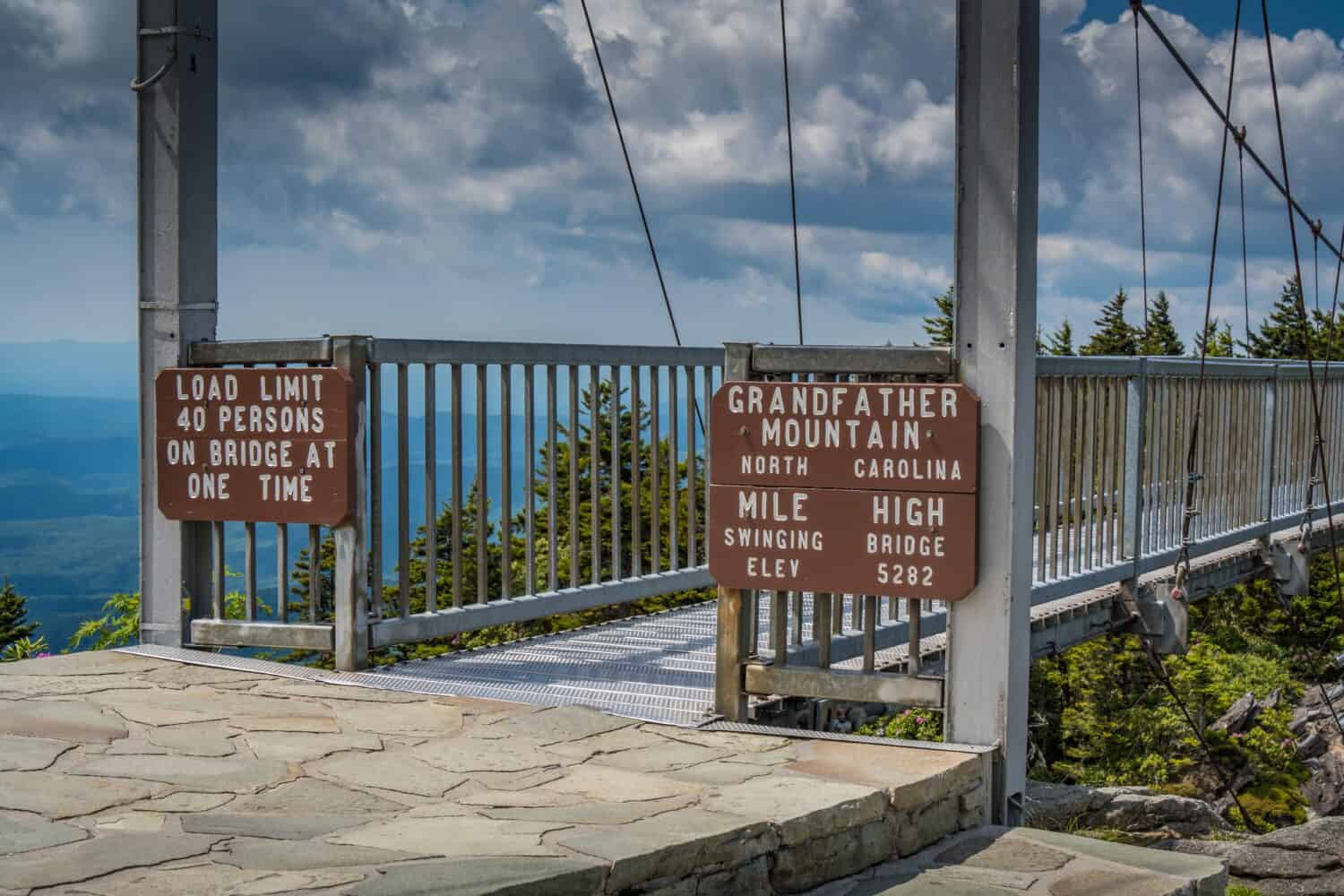The Most Terrifying Bridge in North Carolina Will Put You in a Cold Sweat
North Carolina has more than its share of terrifying bridges. So, if you’re looking for a scary thrill, you’ll have your pick!
Are you afraid of heights? What about long spans over churning waters? Or maybe the thought of crossing a 140-foot-long covered bridge is enough to give you pause.
Well, the Tar Heel State has all those and more!
But there’s a bridge in Linville, North Carolina that tops all the others when it comes to a frightening experience.
The location of this historic bridge is also considered to be the most scenic spot in the southern U.S. And if you’re brave enough to set foot on this particular span, you’ll be able to observe some of the most spectacular views it has to offer.

©Chansak Joe/Shutterstock.com
Not for the Faint of Heart
The “Mile High Swinging Bridge,” as it’s called, is the highest suspension footbridge in America.
First built over 70 years ago, it stretches some 228 feet between Convention Table Rock and Linville Peak, both features of Grandfather Mountain. Unlike the original mile-high bridge at the site, this “newer” 1999 version is made of steel, cables, and springs. That improvement has limited its actual “swinging” action, which must have made it a whole lot scarier.
The new design can also accommodate those in wheelchairs, giving everyone the chance to enjoy the sights from that height.

©Jon Bilous/Shutterstock.com
Still, experiencing a footbridge that’s a mile high and crosses over an 80-foot gorge isn’t for the faint of heart. Especially since this span is in one of the windiest locations in the entire state. That’s according to the U.S. Weather Service Reporting Station there, which has provided daily reports since 1955.
The bridge also “sings.” When the wind blows through its steel railings, it sounds as if a harmonica is being played.
Vistas beyond Compare
But if the idea of walking a mile above the ground doesn’t stop you in your tracks, the views will take your breath away!
What you’ll experience is a 360-degree sweeping panorama of rocks, cliffs, and a vast expanse of the Blue Ridge mountains.
Since 1992 Grandfather Mountain, which stands 5,946 feet above sea level, has been recognized as an International Biosphere Preserve by the United Nations. This strategically located peak stands guard over 72 rare and endangered species, supporting an amazing array of biologically diverse flora and fauna.
These include “threatened” plants like the Blue Ridge goldenrod (Solidago spithameaea) and animals such as the endangered Virginia big-eared bat (Corynorhinus townsendii virginianus), and the Carolina northern flying squirrel (Glaucomys sabrinus coloratus).

©Sean Pavone/Shutterstock.com
At 300 million years old, Grandfather Mountain has been protecting its domain for a very long time!
The Grandfather’s Guardian
But the amazing habitat this area provides could have been lost forever if not for the foresight of the late Hugh Morton.
Morton, a professional photographer who served as a combat newsreel cameraman during World War II, literally inherited Grandfather Mountain from his grandfather, who owned the land! Calling himself the peak’s “guardian,” he set about doing whatever was necessary to both preserve its natural diversity and make it available for visitors to enjoy.
His first mission was to make the mountain accessible to the general public. His second was to build the Mile High Swinging Bridge. It took just six months for the original span to be constructed, opening in 1952.
A true environmentalist and fierce protector of the land, Morton was able to successfully keep the federal government from building a section of the Blue Ridge Parkway directly across Grandfather Mountain during the late 1950s.
Visiting Grandfather Mountain
A visit to Grandfather Mountain starts with a two-mile hairpin-turn trip to the top. One section of this scenic, winding drive was made famous in the movie Forrest Gump. There’s even a signpost to mark the spot where Forrest ran in the film, called the “Forrest Gump Curve.”

©Anthony George Visuals/Shutterstock.com
Along the way to the bridge and “Top Shop” visitors center, there are plenty of reasons to stop, including scenic overlooks, walking trails, picnic areas, and a wildlife habitat. Also on the must-see list of attractions are the Sphinx and Split Rock, two enormous boulders estimated to be 640 million years old.
Once at the Top Shop, which features an exhibition of Hugh Morton’s photography, you’ll have reached an elevation of 5,250 feet!
To reach the bridge from there, you can either climb 50 stairs from the parking area or take a shorter path from the Top Shop. There’s also an elevator that ascends to a level path to the bridge so it’s accessible to all.
Reservations and tickets to enter the park are available online only. Grandfather Mountain is open to visitors year-round, weather permitting, except for Thanksgiving and Christmas Day.
And as if the “cold sweat” that walking on this bridge is likely to put you in isn’t enough, there’s also the chilliness of the environment. Since temperatures at the bridge are typically around 10 degrees colder, make sure to dress in layers.
It may be the most frightening bridge in North Carolina, but it’s also the best way to view some of the most breathtaking vistas in a one-of-a-kind Appalachian wilderness area.









